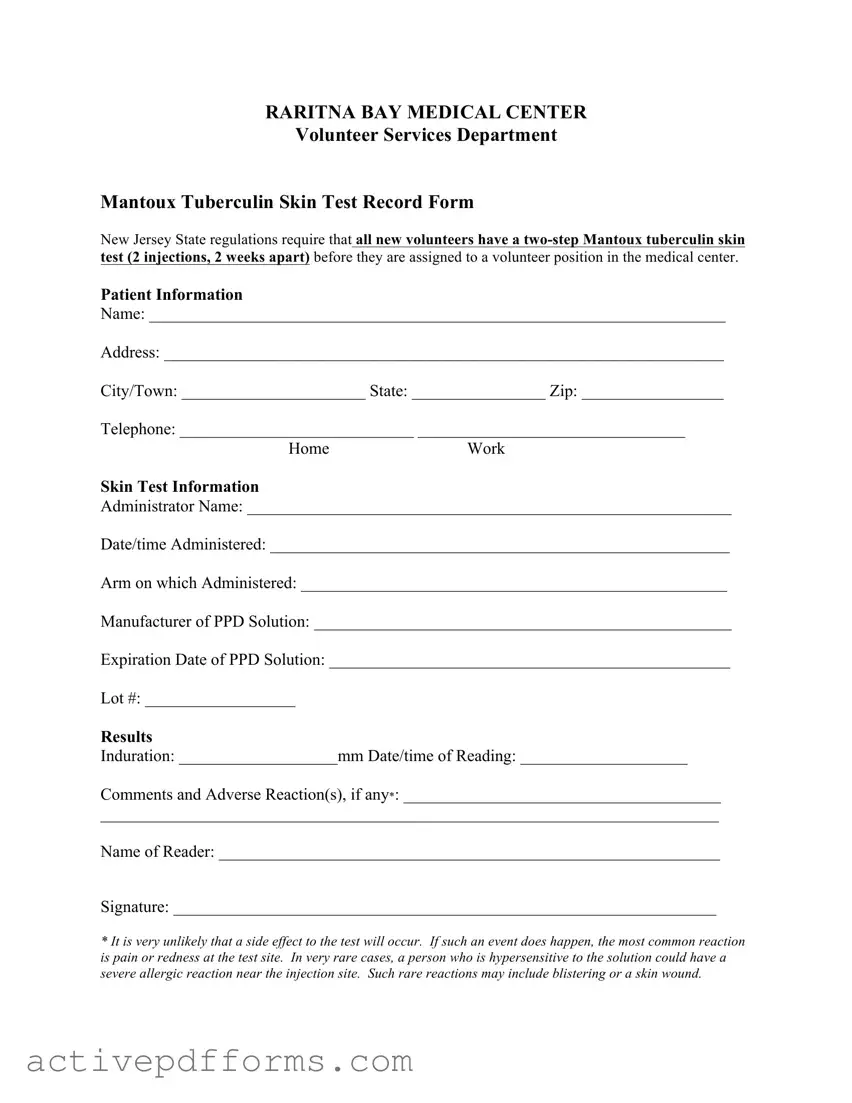
RARITNA BAY MEDICAL CENTER
Volunteer Services Department
Mantoux Tuberculin Skin Test Record Form
New Jersey State regulations require that all new volunteers have a two-step Mantoux tuberculin skin test (2 injections, 2 weeks apart) before they are assigned to a volunteer position in the medical center.
Patient Information
Name: _____________________________________________________________________
Address: ___________________________________________________________________
City/Town: ______________________ State: ________________ Zip: _________________
Telephone: ____________________________ ________________________________
HomeWork
Skin Test Information
Administrator Name: __________________________________________________________
Date/time Administered: _______________________________________________________
Arm on which Administered: ___________________________________________________
Manufacturer of PPD Solution: __________________________________________________
Expiration Date of PPD Solution: ________________________________________________
Lot #: __________________
Results
Induration: ___________________mm Date/time of Reading: ____________________
Comments and Adverse Reaction(s), if any*: ______________________________________
__________________________________________________________________________
Name of Reader: ____________________________________________________________
Signature: _________________________________________________________________
*It is very unlikely that a side effect to the test will occur. If such an event does happen, the most common reaction is pain or redness at the test site. In very rare cases, a person who is hypersensitive to the solution could have a severe allergic reaction near the injection site. Such rare reactions may include blistering or a skin wound.

